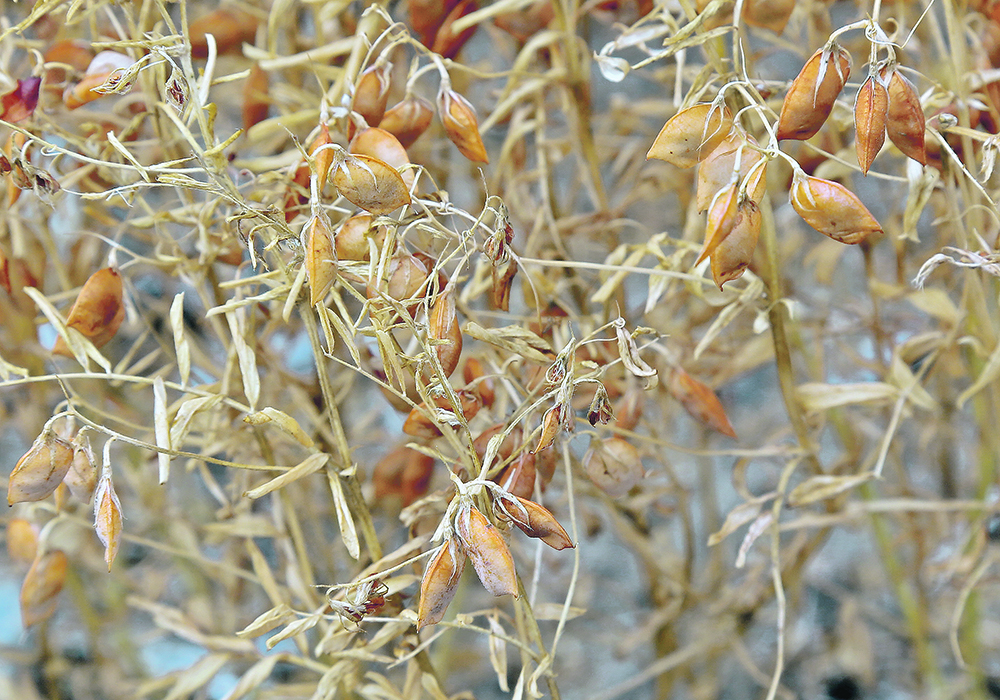India’s winter pulse harvest is smaller than the government anticipated, and that could result in an easing of import restrictions, say analysts.
Prices of many pulses are above the government’s minimum support price for the first time in four years, said G. Chandrashekhar, senior editor of the Hindu Business Line.
“My own personal strong sense is that prices are going to remain firm because the Indian market has actually tightened from a fundamental perspective,” he said in a recent interview with the Global Pulse Confederation.
Read Also

VIDEO: The Western Producer Markets Desk crop outlook for 2025
Watch this video for a 10-minute update of Prairie crop conditions and markets. Bruce Burnett, a weather and market analyst…
He is forecasting 10 million tonnes of chickpea production, well below the government estimate of 11.5 million tonnes. Many in the trade think it will be closer to eight million tonnes.
Chandrashekhar believes the disappointing crop may force the government to revisit its pulse import restrictions in early June.
“Conditions are developing in a way that I see the possibility of a slight opening of the import window,” he said.
India currently has a 50 percent import tariff on peas, 33 percent on lentils and 66 percent on chickpeas. It also has a 150,000 tonne import quota on peas.
Marlene Boersch, managing partner of Mercantile Consulting Venture, agrees that there may be an opening for lentils, but she thinks the pea window will stay slammed shut.
It may make economic sense to import peas into the country, but the government is trying to encourage increased pulse production in India, and every time peas are allowed in it makes it difficult to manage minimum support prices.
“For me, the bigger question is what will happen to lentils,” she said.
Her sources tell her India’s lentil crop may also come in smaller than anticipated. If that is the case she believes there will be some easing of import restrictions on that crop.
That could make a “material difference” in Canada’s supply and demand balance sheet, which is already expected to be tight due to low carryover from the 2020-21 crop and dryness concerns in the prime lentil growing areas of Western Canada.
Boersch had originally penciled in a six or seven percent drop in Canadian lentil sales to India but the circumstances appear to be changing.
“If you add on another 100,000 tonnes or so, it would certainly make a big difference,” she said.
The Indian demand would likely materialize right around the time that Canadian farmers are harvesting the 2021 crop.
“That is a very healthy thing for us if that happened because what we can move early off the combine has a big influence on what happens the rest of the year,” said Boersch.
Chandrashekhar mentioned that pigeon peas are one of the crops in India where prices have been on the rise. Canadian green lentils are used as a substitute for pigeon peas.
India often imports pigeon peas from neighbouring Myanmar, but a military coup in that country has put trade in jeopardy.
Pulse trade between the two countries stalled for a few weeks following the Feb. 1, 2021, coup but are slowly picking up, said Chandrashekhar.
However, Myanmar’s pulse stocks are limited and now there are financing and logistical problems to contend with, he said.
Boersch has spoken to a couple of contacts in the pulse trade who say Myanmar’s traders are used to managing their way through difficult times.
However, she wonders if a military coup presents a whole new level of challenges.
“Right now Myanmar has big problems and in general that does something to your export program,” she said.
That could also present an opportunity for shipping more Canadian green lentils to India.


















